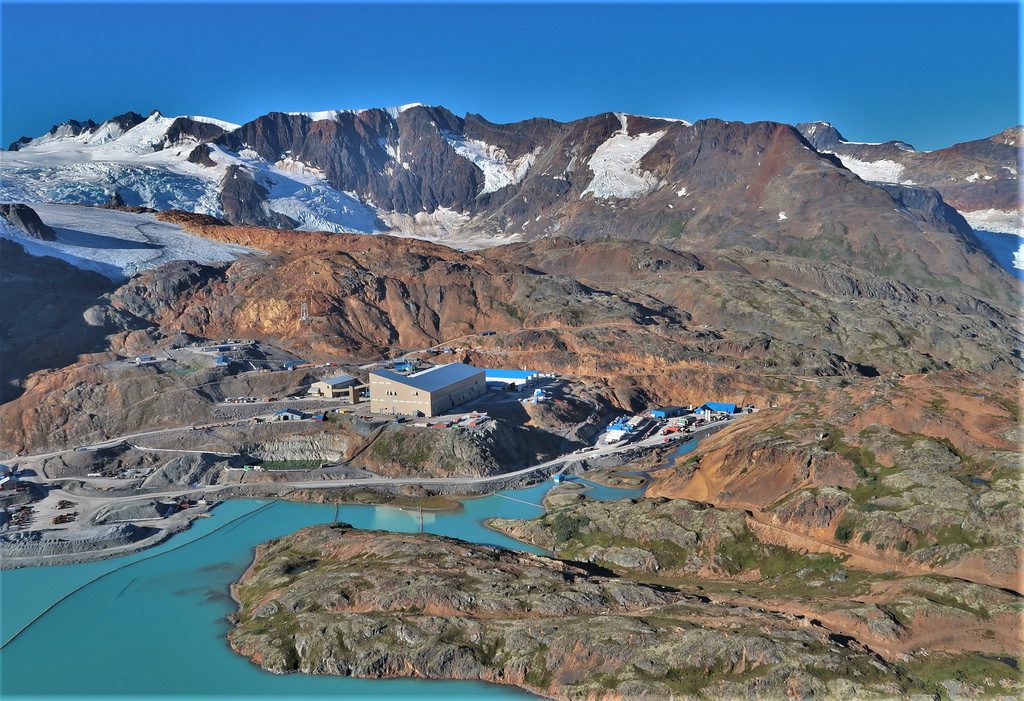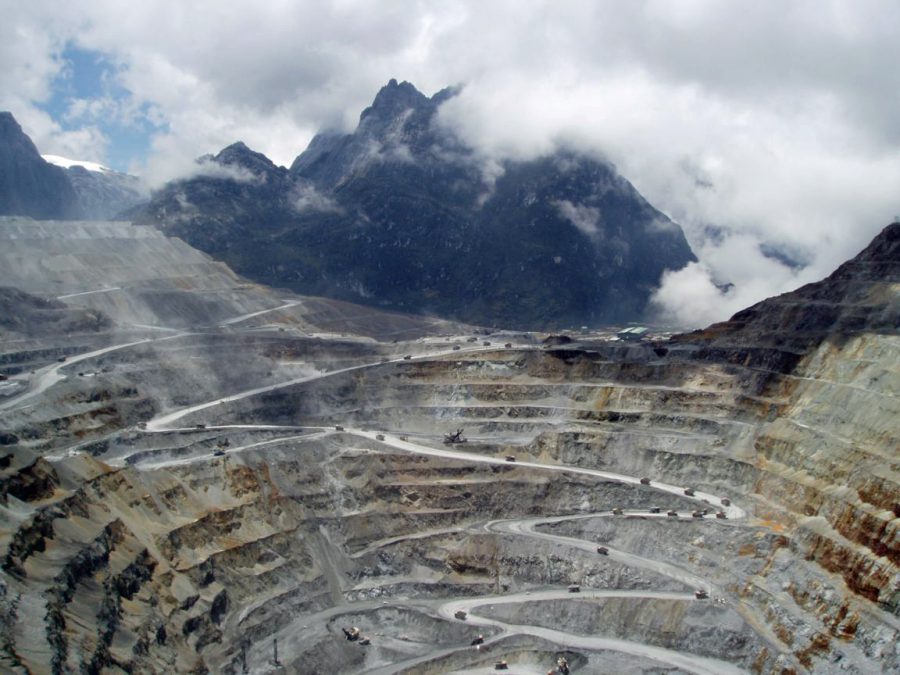Brucejack, Silvertip among British Columbia’s biggest recent successes

The most recent Annual Survey of Mining Companies by the Fraser Institute ranked British Columbia seventh among Canadian mining jurisdictions. But no other province or territory has had two new precious metal mines reach commercial production less than 15 months apart over the last two calendar years.
In July 2017, Pretium Resources (TSX: PVG; NYSE: PVG) launched commercial production at its high-grade Brucejack gold mine in B.C.’s Golden Triangle, 60 km north of Stewart, British Columbia.
Pretium’s Brucejack mine delivered 96,300 oz. gold in the fourth quarter to bring total gold production in the second half of 2018 to 188,983 oz. gold, or 95% of the low end of its 200,000 oz. production guidance.
About 14 months later, Coeur Mining’s (NYSE: CDE) Silvertip silver-zinc-lead mine in northwestern B.C. reached the same milestone.
And not far from Brucejack, near Stewart, IDM Mining (TSXV: IDM; US-OTC: IDMMF) received its provincial environmental assessment certificate for the Red Mountain gold project, as well as a positive federal environmental assessment decision.
Brucejack consists of the Valley of the Kings deposit, which had been discovered in 2009 by Silver Standard Resources.
Under the guidance of former Silver Standard president and CEO Robert Quartermain, now Pretium chairman, Pretium had its initial public offering in 2010, and secured the rights to Brucejack.
High-grade, gold-silver mineralization at the Valley of the Kings occurs in steeply dipping and predominantly east- to northwest-trending quartz stockwork veins and breccia zones, inside a broader halo of clay alteration and low-grade mineralization.
The result is that the gold mineralization is “nuggety,” which makes it hard to mill with predictable output.
The company watched its stock price plummet in 2017, as it struggled to reach planned production levels. But by 2018 gold production numbers climbed closer to expectations, at least until the fourth quarter.
Pretium’s Brucejack mine delivered 96,300 oz. gold in the fourth quarter to bring total gold production in the second half of 2018 to 188,983 oz. gold, or 95% of the low end of its 200,000 oz. production guidance.
The Brucejack mine produced 376,000 oz. for all of 2018, or 97% of its guidance.

The processing plant at Pretium Resources’ Brucejack gold mine in northwest British Columbia. Credit: Pretium Resources.
In a note titled “Q4 falls short — again,” BMO Capital Markets analyst Andrew Kaip wrote that the production miss was “attributable to lower-grade reconciliation with the 11.5 gram-per-tonne gold grade achieved during Q4/18, well below our estimate for 14.5 grams. To compensate, PVG looks to have pushed tonnes, as 267,000 tonnes milled was above our expectation for 239,000 tonnes … we now expect Q4 earnings per share, cash flow per share and free cash flow estimates to decline by an average of 30%, and full-year 2018 by an average of 8%.”
Pretium seeks to refine its grade-control program over the coming quarters to improve short-term grade predictability. One method could include longitudinal long-hole stoping.
“The high variability of the gold mineralization throughout the Valley of the Kings deposit is a key characteristic of the Brucejack mine, and gold production is managed with grade control, the sequence of the mine plan and the availability of stopes for optimal grade blending,” Pretium president and CEO Joseph Ovsenek said in a release. “We will build on what we have learned mining the gold mineralization at the Valley of the Kings over the first six quarters of production to further refine our grade-control program and mining methods.”
Joe Mazumdar, an analyst at the newsletter Exploration Insights, talked about grade reconciliation at the Valley of Kings deposit during an interview on Episode #29 of The Northern Miner Podcast.
“The grade reconciliation … depends on the time period you’re talking about. If you talk about a month, the [grade] reconciliation can be very volatile. Over the life of the mine, it might actually meet what the reserves say. But day to day, week to week, month to month, it may not,” Mazumdar said.
Ovsenek said the company plans to update the reserve and resource numbers, and grade reconciliation, early in 2019.
At the end of 2018, Pretium had $45 million in cash after buying back its gold-streaming contract from Osisko Gold Royalties (TSX: OR; NYSE: OR), which had bought it from Orion Mine Finance Group.
The company also received permits to boost daily tonnage 3,800 tonnes, up from 2,700.
BMO has an “outperform” rating on Pretium and a 12-month target of $17.50.
Silvertip
In October 2017, Chicago-based silver and gold miner Coeur Mining bought Silvertip in a $200-million cash-and-share deal for JDS Silver.
At the time only 5% of the 370 sq. km Silvertip land package had been explored. Another $50 million is payable once Coeur reaches exploration and permitting milestones.
“We look forward to continuing our exploration efforts to expand the size of this prospective, high-grade deposit, and further extend the mine life,” said Mitchell J. Krebs, Coeur’s president and CEO, in a release.

JDS Silver’s Silvertip silver-zinc-lead mine in northern British Columbia, 16 km south of the Yukon border. Credit: JDS Silver.
Silvertip hosts 1.61 million proven and probable tonnes grading 289 grams silver per tonne, 8.2% zinc and 5.6% lead for almost 15 million oz. silver, 292.7 million lb. zinc and 198.65 million lb. lead.
The project hosts another 1.17 million measured and indicated tonnes grading 223 grams silver per tonne, 8.6% zinc and 4.1% lead for 8.42 million oz. silver, 222.48 million lb. zinc and 105.9 lb. lead.
Coeur milled 86,000 tonnes at Silvertip in 2018, just less than half of which was done in the fourth quarter. The mine officially reached commercial production on Sept. 1.
In 2018, the mine produced 340,000 oz. silver, 6.78 million lb. zinc and 3.91 million lb. lead in concentrate, well below the company’s 2018 guidance of 700,000 to 1.2 million oz. silver.
Coeur continues to work towards its 1,000-tonne-per-day target by the end of March. Throughput stands at 631 tonnes per day.
Added Krebs: “We have made substantial progress over the past 14 months since acquiring Silvertip, and will carry that momentum into 2019.”
In a Jan. 14 note, BMO silver analyst Ryan Thompson wrote that operationally in the fourth quarter, Coeur showed “solid production from Kensington, Rochester and Palmarejo, which was offset by weaker production at Wharf and Silvertip … [and] we are lowering our target price to US$6.50, as we have updated our Silvertip model with the Dec. 27 technical report results.
Positively, Q4 showed progress at Silvertip vs. Q3, and so far in 2019, the plant has achieved 631 tonnes per day month-to-date vs. 391 tonnes per day in the fourth quarter.”
Red Mountain
Nearby in B.C.’s Golden Triangle, IDM Mining is moving ahead with its Red Mountain underground gold project near Stewart.
However, in January Ascot Resources (TSXV: AOT, US-OTC: AOTVF) announced a bid to acquire all of the issued and outstanding shares of IDM in a friendly, all-share deal. Each IDM shareholder will receive 0.0675 of an Ascot share for each share of IDM held. The deal valued IDM at 8.6¢ per share as the bid was launched.
“This combination provides a critical mass and optionality for development of multiple high-grade gold deposits, which will result in significant stakeholder benefits for citizens of the Nisga’a Nation, for my hometown of Stewart, and for my friends in the border town of Hyder. The combined company will control two geological trends hosting significant exploration ground in the Golden Triangle,” said IDM president and CEO Robert McLeod in a release.

Overlooking the core shack at IDM Mining’s Red Mountain gold project in northwest British Columbia’s Golden Triangle. Photo by The Northern Miner.
Red Mountain hosts a measured and indicated resource of 2.77 million tonnes grading 7.91 grams gold per tonne and 22.75 grams silver, for 704,600 oz. gold and 2.026 million oz. silver. There are another 316,000 inferred tonnes at 6.04 grams gold and 7.61 grams silver, for 61,400 oz. gold and 77,200 oz. silver.
The Canadian Environmental Assessment Agency recently issued a positive decision for the wholly-owned Red Mountain gold-silver project.
The federal agency said Red Mountain is “not likely to cause significant adverse environmental effects, and the project may proceed,” but it is subject to 120 conditions that IDM must fulfill throughout the life of the Red Mountain project.
Vancouver-based Ascot is developing the Premier gold project nearby, and says it launched its bid for IDM “to create the leading high-grade gold development and exploration company” in B.C.’s Golden Triangle, and that the combined entity will “benefit from numerous operational and development synergies.”
— Based in Toronto, Brian Sylvester is a freelance business writer specializing in mining.
This story first appeared in The Northern Miner on 18 January 2019.
More News
First Quantum pulls back from arbitration on Panama copper mine
Signals potential for more negotiations with the nation over the Cobre Panama mine that’s been shuttered for more than a year.
March 31, 2025 | 04:30 pm
Freeport-McMoRan lowers first-quarter gold sales forecast
The company said it expects first-quarter gold sales to be roughly 100,000 ounces below its prior forecast of 225,000 ounces.
March 31, 2025 | 03:41 pm
{{ commodity.name }}
{{ post.title }}
{{ post.excerpt }}
{{ post.date }}



Comments
Charles Antoine
Watch Quebec where Lz5 mine from Agnico reached commercial production summer 2018 and Eldorado’s Lamaque is just about to reach commercial production. So the 15 month mark is beaten there also.